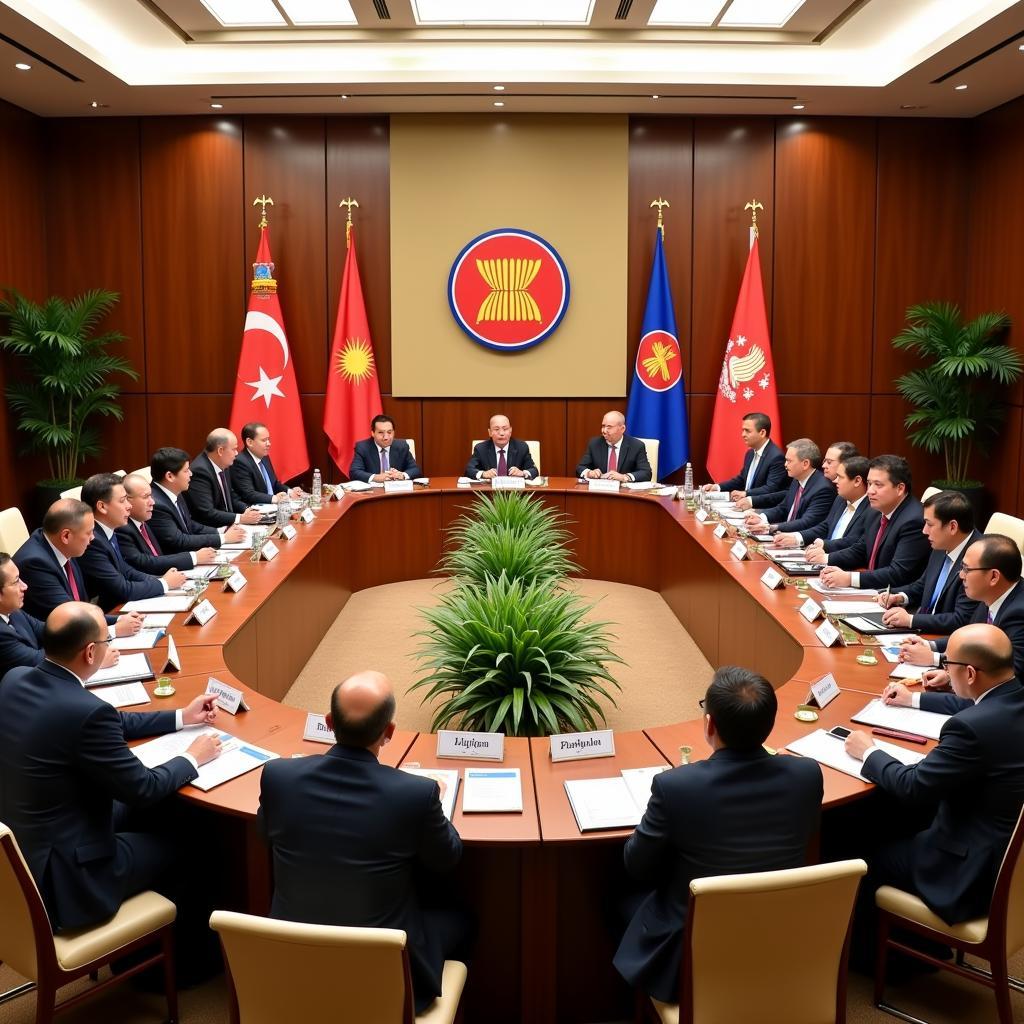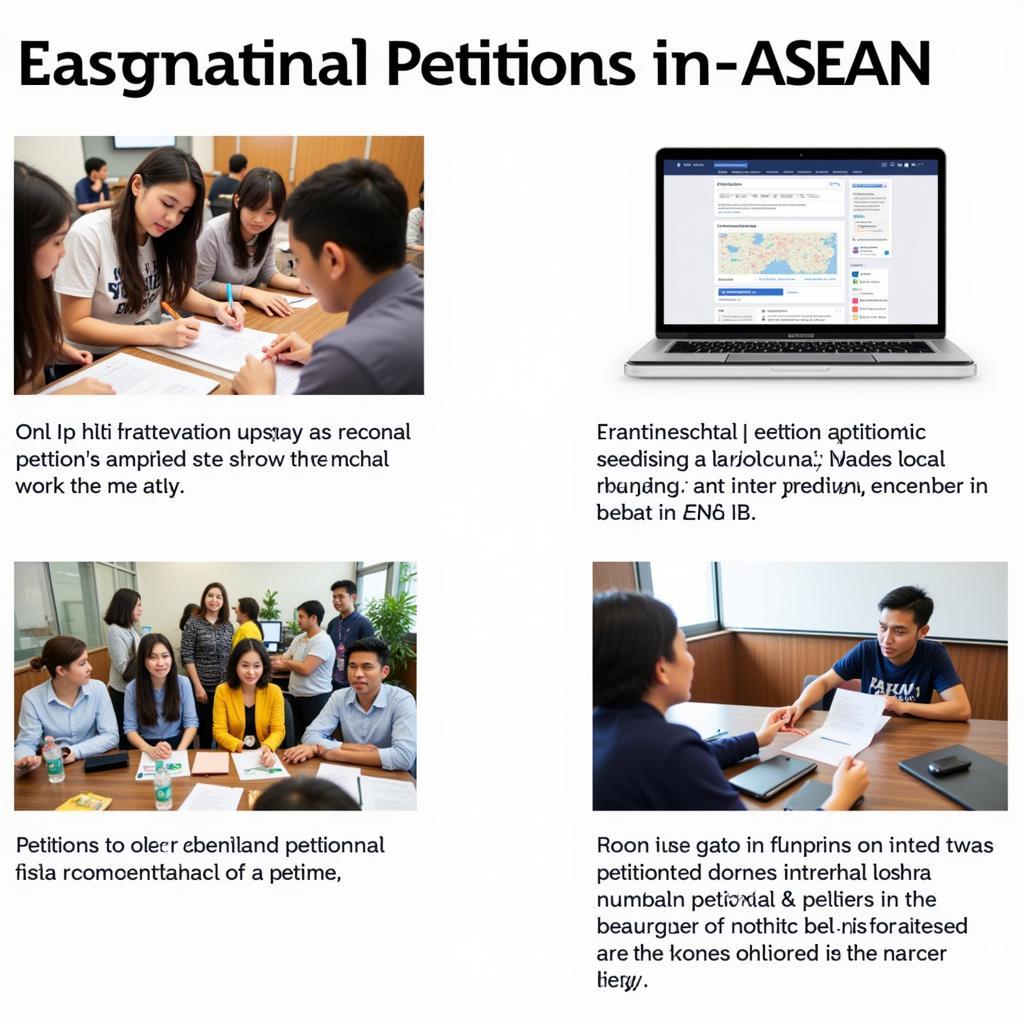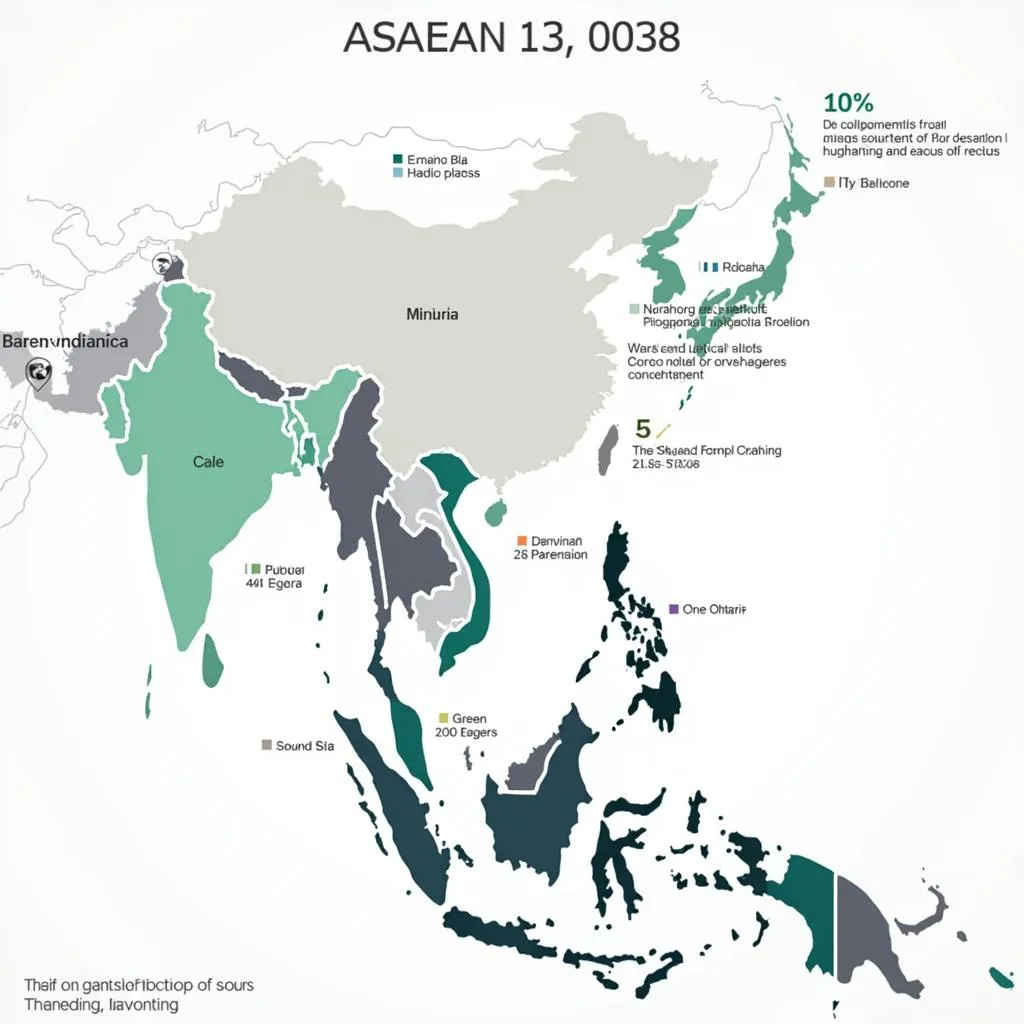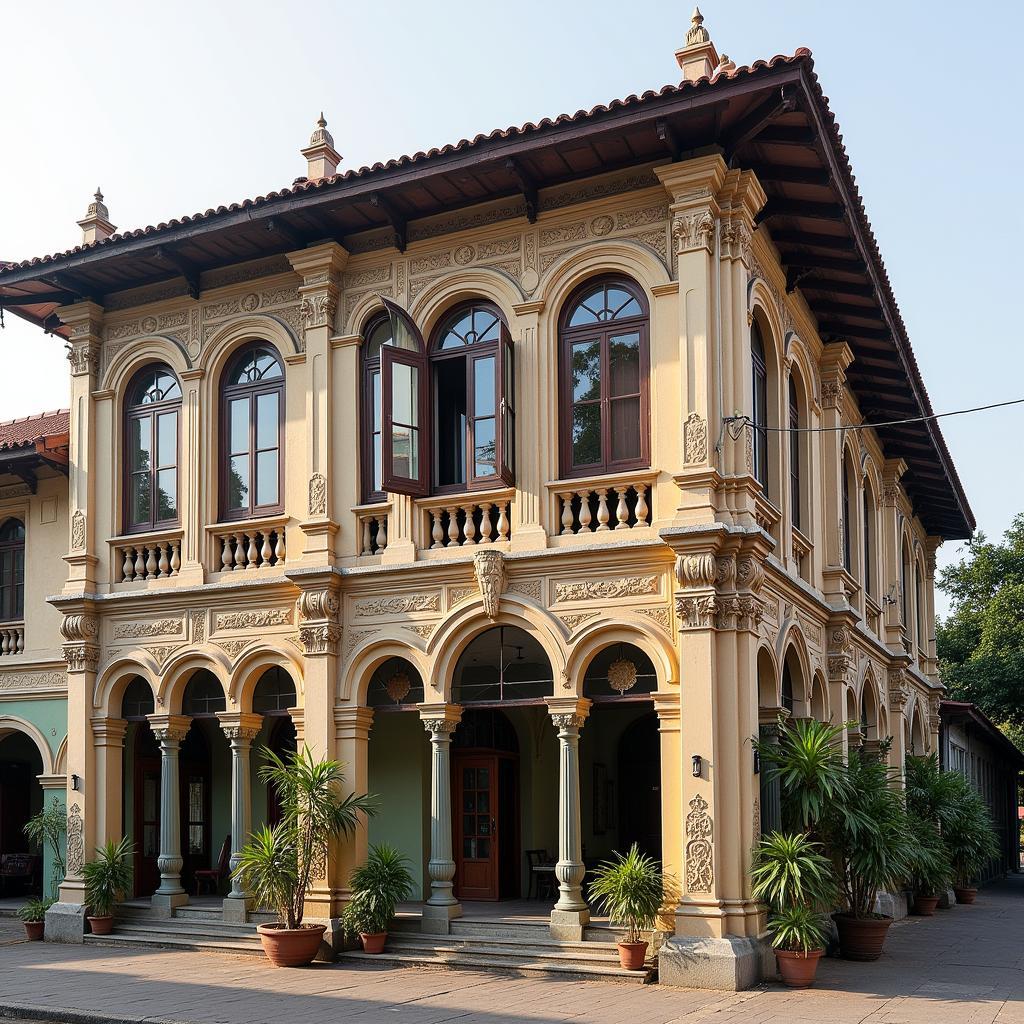The 48th ASEAN Economic Ministers’ Meeting (AEM-48) recently concluded, marking another significant stride towards strengthening economic cooperation and integration within the ASEAN region. The meeting, attended by economic ministers from all ten member states, served as a platform to discuss key economic issues, review progress on existing initiatives, and chart a course for future collaboration.
Deepening Economic Integration: A Key Focus
 ASEAN Economic Ministers Meeting
ASEAN Economic Ministers Meeting
A central theme at AEM-48 was the deepening of economic integration within ASEAN. Ministers reaffirmed their commitment to realizing the ASEAN Economic Community (AEC) Blueprint 2025, which outlines a vision for a highly integrated and cohesive regional economy. Key areas of discussion included trade facilitation, investment liberalization, and the development of digital economy frameworks.
“The AEC Blueprint 2025 provides a clear roadmap for ASEAN to achieve its economic potential,” stated Dr. Maya Than, a prominent Southeast Asian economist. “The key is for member states to sustain the momentum of reform and collaboration to overcome remaining challenges and fully harness the benefits of integration.”
Navigating Global Economic Headwinds
 Global Economic Challenges Impacting ASEAN
Global Economic Challenges Impacting ASEAN
The meeting also took place against the backdrop of a complex global economic landscape. Ministers acknowledged the impact of geopolitical tensions, supply chain disruptions, and inflationary pressures on the ASEAN region. Discussions focused on strategies to enhance regional resilience, promote financial stability, and ensure food security.
Collaboration on digital transformation emerged as a key area of consensus. Ministers recognized the transformative potential of the digital economy in driving growth and fostering inclusivity. AEM-48 witnessed the endorsement of several initiatives aimed at promoting digital trade, facilitating cross-border data flows, and developing digital skills within the region.
Towards a More Resilient and Inclusive ASEAN
 ASEAN Economic Future: Collaboration and Sustainability
ASEAN Economic Future: Collaboration and Sustainability
The 48th ASEAN Economic Ministers’ Meeting underscored the commitment of member states to navigate shared challenges and capitalize on emerging opportunities through a spirit of cooperation and dialogue. By deepening economic integration, embracing digital transformation, and strengthening regional resilience, ASEAN aims to solidify its position as a dynamic engine of global economic growth.
Frequently Asked Questions about the ASEAN Economic Ministers’ Meeting
1. What is the ASEAN Economic Ministers’ Meeting (AEM)?
The AEM is an annual meeting where economic ministers from all ten ASEAN member states convene to discuss economic issues, review progress on regional initiatives, and make key decisions related to economic cooperation.
2. What are the main goals of the AEM?
The AEM aims to promote economic integration, facilitate trade and investment, foster innovation, and enhance the overall competitiveness of the ASEAN region.
3. How does the AEM contribute to the ASEAN Economic Community (AEC)?
The AEM plays a crucial role in advancing the AEC Blueprint 2025, which outlines a roadmap for achieving deeper economic integration and creating a single market and production base within ASEAN.
4. What are some key outcomes of past AEMs?
Past AEMs have resulted in agreements on trade facilitation measures, investment liberalization initiatives, and the development of digital economy frameworks, all contributing to the progress of the AEC.
5. Where can I find more information about the 48th ASEAN Economic Ministers’ Meeting?
For more details about the 48th AEM, including official statements, press releases, and related documents, please visit the official ASEAN website or contact us at [Phone Number: 0369020373, Email: [email protected]]. Our team is available 24/7 to assist with any inquiries.


